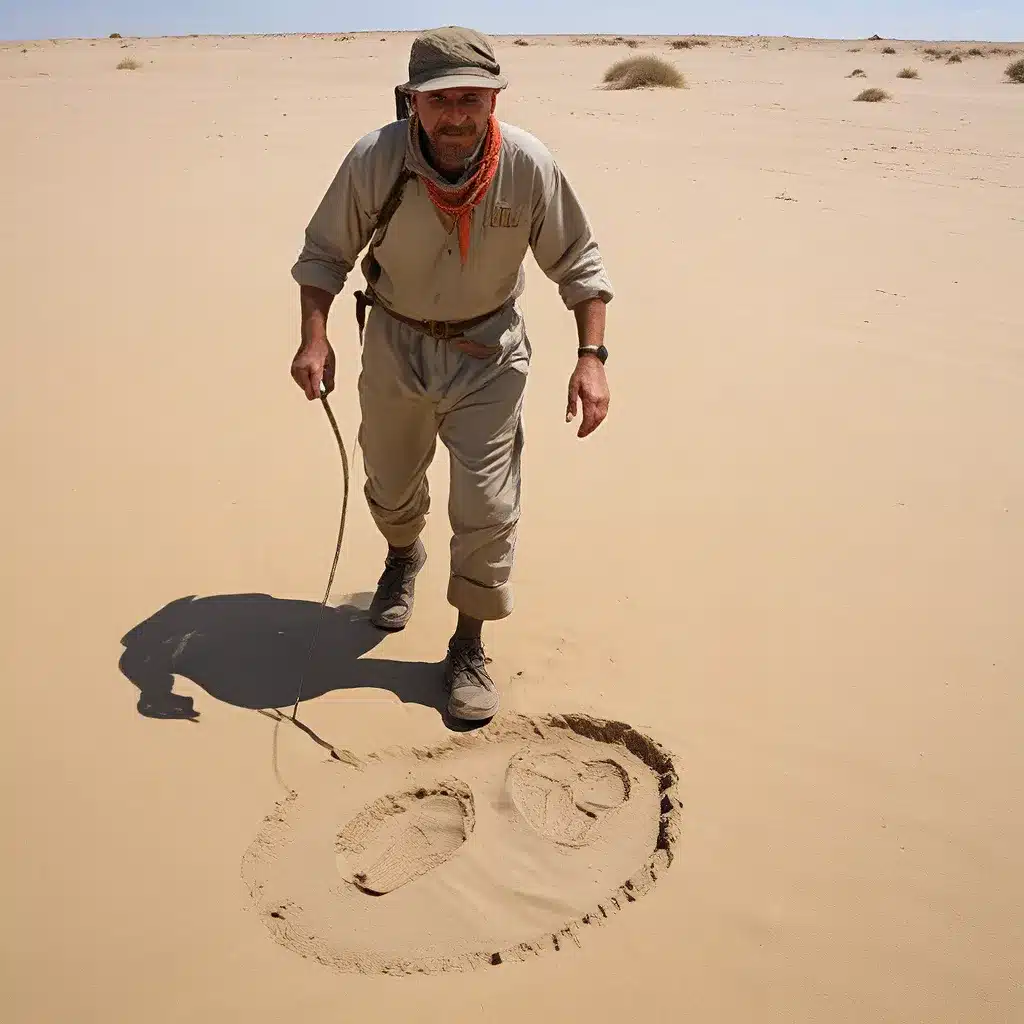
Discovering the Lost Wetlands of the Tularosa Basin
The vast, arid landscapes of the American Southwest often conjure images of sun-baked deserts and rugged canyons. However, White Sands National Park in New Mexico harbors a remarkable secret buried beneath the pristine white dunes – the fossilized footprints of ancient creatures that once roamed a lush, prehistoric wetland.
Tens of thousands of years ago, during the last Ice Age, the Tularosa Basin was home to a sprawling Lake Otero, a vast body of water that supported a thriving ecosystem. The climate was less arid, and the vegetation was abundant, with grasslands stretching for miles that resembled the prairies of the Midwest rather than the deserts of New Mexico. This oasis of life naturally attracted a variety of ancient megafauna, including ancient camels, Columbian mammoths, and Harlan’s ground sloths, which came to the lake to graze on the lush vegetation.
But the Tularosa Basin was not just a haven for herbivores; it also drew the attention of fearsome predators, such as the dire wolf and the American lion, who prowled the wetlands in search of prey. The footprints of these ancient animals have been preserved in the sediments of Lake Otero, providing a unique window into the past and offering valuable insights into the ecology and behavior of these long-extinct species.
Uncovering the Secrets of the Dunes
Every day, visitors from all over the world flock to White Sands National Park, leaving their own traces of adventure in the form of footprints on the pristine white dunes. But these dunes are just a recent occurrence in the geological timeline of the Tularosa Basin, and it is the ancient footprints that hold the key to unlocking the secrets of the past.
As the climate shifted and the lake eventually dried up, the sediments containing the fossilized footprints were exposed and preserved by the encroaching sand dunes. These remarkable fossilized footprints, scattered across the landscape, have become a focus of intense scientific study, with researchers and archaeologists working to uncover the stories they hold.
By carefully analyzing the size, shape, and distribution of these footprints, scientists have been able to reconstruct the movements and behaviors of the ancient animals that once called the Tularosa Basin home. From the giant strides of the Columbian mammoths to the delicate prints of the ancient camels, each footprint provides a tantalizing glimpse into the past, revealing the intricate web of life that once thrived in this now-arid landscape.
Tracking the Footsteps of Prehistoric Explorers
But the story of the Tularosa Basin does not end with the ancient megafauna. Researchers have also uncovered evidence of human presence in the form of fossilized footprints left behind by the prehistoric inhabitants of the region. These footprints, along with the remains of ancient campsites and tools, suggest that the Tularosa Basin was not just a haven for wildlife, but also a thriving hub of human activity during the Ice Age.
By studying the size, depth, and distribution of these human footprints, scientists have been able to reconstruct the movements and behaviors of the ancient explorers who traversed the Tularosa Basin. Were they hunters, gathering resources from the lake and its surrounding grasslands? Or were they nomadic groups migrating across the landscape in search of new opportunities and resources?
The answers to these questions are slowly being pieced together through the careful analysis of the fossilized footprints and the other archaeological evidence that has been uncovered in the Tularosa Basin. Each new discovery provides a tantalizing clue to the rich and complex history of this remarkable region, and the resilience and adaptability of the ancient humans who called it home.
The Lasting Legacy of the Tularosa Basin
The Tularosa Basin’s remarkable story is not just a tale of ancient life and exploration, but also a testament to the power of modern science and technology to uncover the secrets of the past. Through the use of advanced imaging techniques and sophisticated analytical methods, researchers have been able to decipher the faint imprints left behind by the long-extinct creatures and prehistoric explorers who once roamed this remarkable landscape.
As the world continues to change and evolve, the fossilized footprints of the Tularosa Basin serve as a humbling reminder of the resilience and adaptability of life on our planet. They remind us that, even in the face of dramatic environmental shifts and the extinction of entire species, the natural world has a remarkable ability to recover and thrive, and that the stories of the past can still hold profound lessons for the future.
So, as you wander through the pristine white dunes of White Sands National Park, take a moment to look down at the ground beneath your feet. Who knows what hidden stories and ancient secrets might be waiting to be uncovered, just waiting for the next generation of explorers and scientists to unearth them? The lost kingdoms of the Tularosa Basin are just waiting to be discovered.


